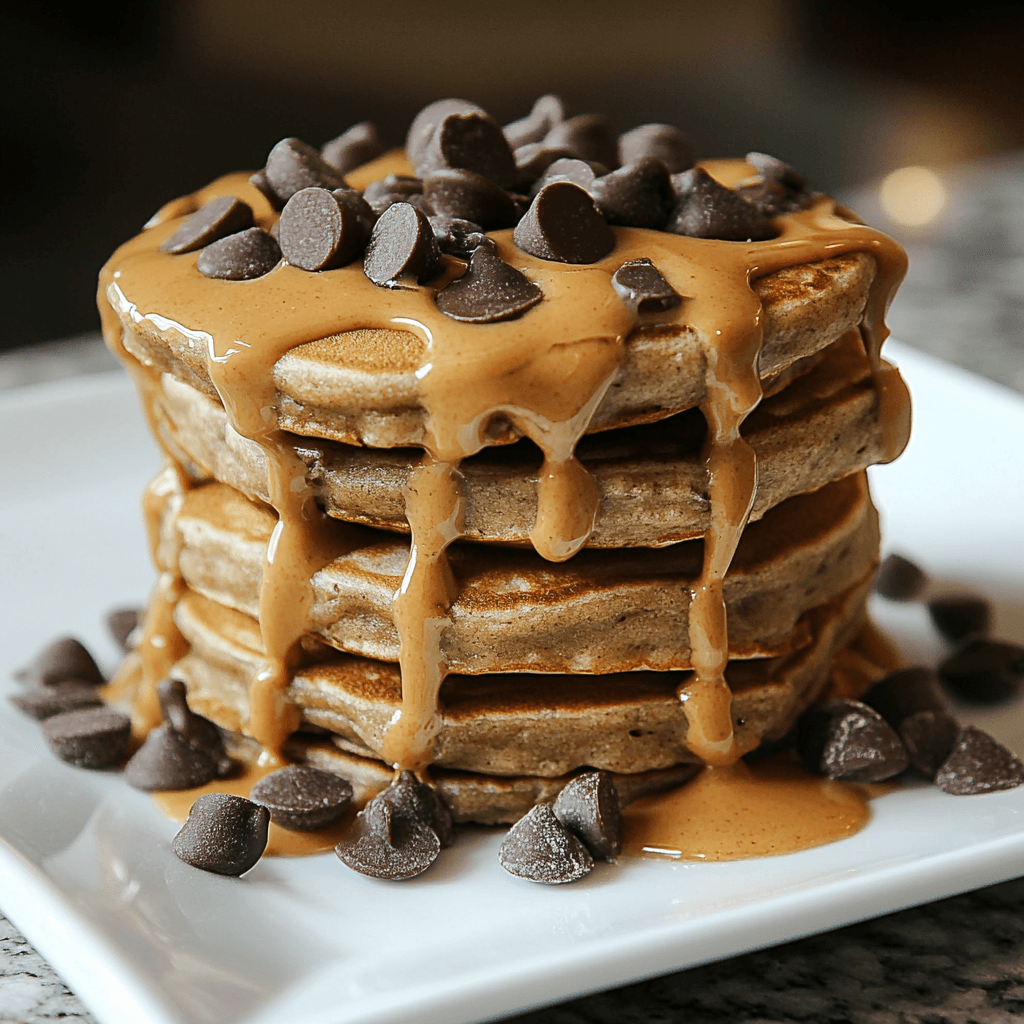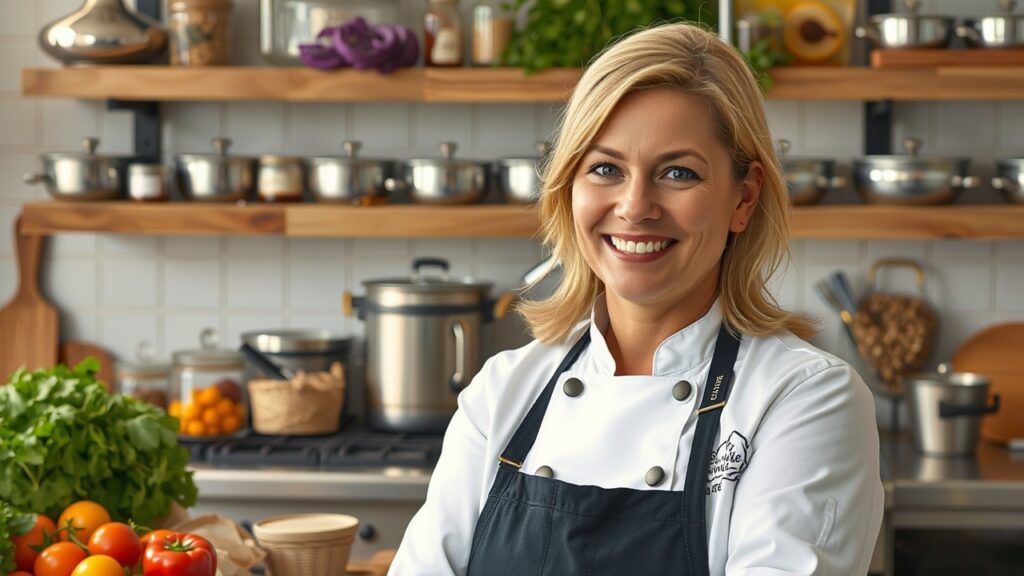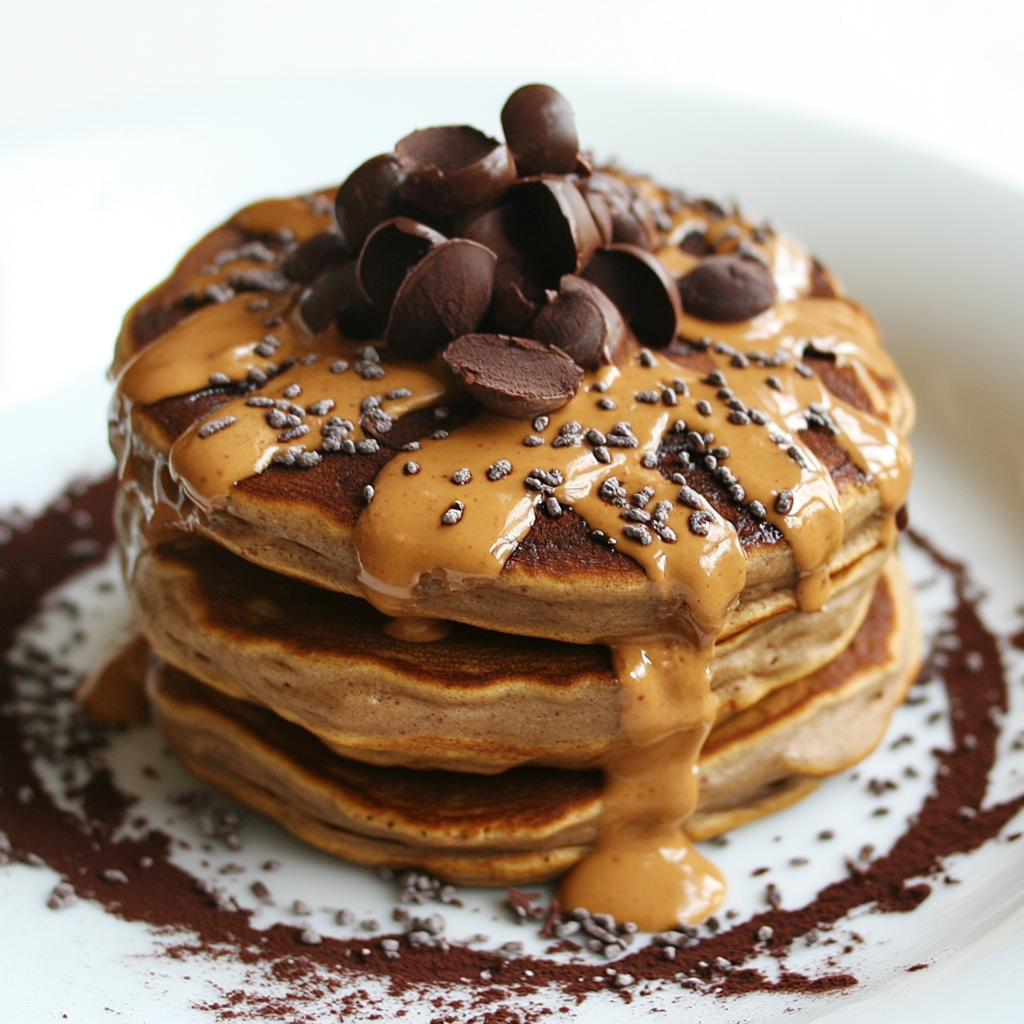Introduction to Protein Pancakes
What Are Protein Pancakes?
Protein pancakes are a nutritious twist on traditional pancakes, packed with protein to fuel your body and keep you energized. Made with protein-rich ingredients like protein powder, eggs, or Greek yogurt, these pancakes are a perfect blend of health and flavor, making them an excellent choice for fitness enthusiasts and anyone looking for a healthier breakfast option.
Benefits of Adding Protein to Your Breakfast
Starting your day with a protein-rich meal helps stabilize blood sugar levels, improves focus, and provides sustained energy throughout the day. Protein pancakes are a delicious way to incorporate more protein into your diet while still enjoying a comforting and satisfying breakfast.
Why Protein Pancakes Are Trending
Protein pancakes have gained popularity for their versatility and ability to support health and fitness goals. Whether you’re looking to lose weight, build muscle, or simply eat healthier, protein pancakes cater to a wide range of dietary needs. With endless customization options, they’re easy to tailor to your taste and nutritional requirements.
Benefits of Protein Pancakes
Boosting Muscle Growth and Recovery
Protein is essential for repairing and building muscles. Including protein pancakes in your breakfast provides the necessary nutrients to support muscle recovery after workouts, making them a favorite among athletes and gym-goers.
Keeping You Fuller for Longer
The high protein content in these pancakes helps you stay fuller for longer periods, reducing unnecessary snacking and keeping hunger at bay. This makes them an excellent choice for those trying to manage their weight.
A Healthier Alternative to Traditional Pancakes
Unlike traditional pancakes that are often high in refined carbohydrates and sugars, protein pancakes use nutrient-dense ingredients like oats, bananas, and protein powder. These healthier swaps reduce calorie intake while increasing the nutritional value of your meal.
With protein pancakes, you can enjoy a delicious breakfast while meeting your fitness and health goals. They’re not just a meal; they’re a smarter way to start your day.
Essential Ingredients for Protein Pancakes
Protein Powder Options
Protein powder is a key ingredient in protein pancakes, providing the necessary boost of protein. Popular options include:
- Whey Protein: Ideal for a light, fluffy texture and quick muscle recovery.
- Plant-Based Protein: Options like pea, rice, or hemp protein cater to vegan and lactose-intolerant individuals.
- Collagen Protein: Adds protein without altering the flavor significantly, ideal for those seeking a subtle option.
Flour Choices (Almond, Oat, or Coconut)
The type of flour you choose can significantly affect the texture and nutritional profile of your pancakes:
- Almond Flour: Low-carb and rich in healthy fats, perfect for keto-friendly pancakes.
- Oat Flour: High in fiber and a great option for heart-healthy recipes.
- Coconut Flour: Gluten-free and low in carbs, though it requires more liquid due to its absorbency.
Binding Ingredients (Eggs, Bananas, etc.)
To hold the batter together and create the right consistency, binding ingredients are crucial:
- Eggs: Add structure and protein, creating a fluffy texture.
- Mashed Bananas: A natural sweetener and binder, ideal for dairy-free or vegan recipes.
- Greek Yogurt: Adds creaminess and an extra protein boost.
Tools and Equipment Needed
Mixing and Blending Tools
- Whisk or Blender: For combining the ingredients into a smooth batter. Blenders work well when using thicker flours or blending bananas.
- Mixing Bowl: A medium-sized bowl for manually mixing ingredients if you’re not using a blender.
Non-Stick Griddle or Pan
- Non-Stick Griddle: Ensures even cooking and prevents sticking, ideal for making multiple pancakes at once.
- Cast Iron Skillet: Retains heat well, giving the pancakes a crispy exterior, though it requires proper seasoning.
Measuring Tools for Precision
- Measuring Cups and Spoons: For accurately portioning out flour, protein powder, and liquids.
- Kitchen Scale: Useful for precise measurements, especially when using protein powder or almond flour.
Having the right ingredients and tools ensures that your protein pancakes turn out fluffy, delicious, and perfectly cooked every time.
Step-by-Step Protein Pancakes Recipe
Preparing Your Ingredients
- Measure Ingredients: Accurately measure your protein powder, flour, and liquids for consistent results.
- Prep Binding Ingredients: Mash bananas, crack eggs, or measure Greek yogurt as per your recipe.
- Preheat Your Pan: Heat a non-stick griddle or skillet over medium heat and lightly grease it with cooking spray or a small amount of oil.
Mixing the Batter
- Combine Dry Ingredients: In a mixing bowl, whisk together the protein powder and chosen flour (almond, oat, or coconut) with any additional dry ingredients like baking powder or spices.
- Add Wet Ingredients: Stir in the eggs, milk (or plant-based alternative), and any binding ingredients like mashed bananas or yogurt. Mix until the batter is smooth but avoid overmixing.
- Adjust Consistency: If the batter feels too thick, add a splash of milk. If it’s too runny, add a little more flour or protein powder.
Cooking Protein Pancakes to Perfection
- Pour the Batter: Use a ladle or measuring cup to pour small circles of batter onto the preheated griddle.
- Watch for Bubbles: Cook until bubbles form on the surface and the edges look set (about 2-3 minutes).
- Flip Gently: Flip the pancake with a spatula and cook the other side for another 2 minutes until golden brown.
- Serve Warm: Stack the pancakes and serve immediately with your favorite toppings.
Common Mistakes to Avoid
Using Too Much Protein Powder
Excessive protein powder can make the pancakes dense, dry, and overly chewy. Stick to the recommended ratio of protein powder to flour to maintain a light, fluffy texture.
Skipping the Resting Period
Letting the batter rest for 5-10 minutes allows the dry ingredients to fully hydrate, resulting in smoother, more evenly cooked pancakes. Skipping this step can lead to uneven texture and spreading.
Overcooking the Pancakes
Cooking on too high heat or for too long can burn the exterior while leaving the inside undercooked. Use medium heat and watch closely for visual cues like bubbles and golden edges to achieve perfectly cooked pancakes.
By following these steps and avoiding common mistakes, you’ll master the art of making delicious and healthy protein pancakes every time!

Tips for Fluffy Protein Pancakes
Balancing Wet and Dry Ingredients
Getting the right ratio of wet to dry ingredients is crucial for achieving fluffy protein pancakes. If the batter is too thick, the pancakes may turn out dense and dry. On the other hand, a batter that is too runny can result in thin, flat pancakes. Adjust by adding a splash of milk or water if the batter is too thick, or a little more flour or protein powder if it’s too runny. Aim for a smooth, slightly thick consistency that pours easily.
Adding Baking Powder for Lift
Baking powder is a game-changer when it comes to fluffy pancakes. Adding just a teaspoon to your dry ingredients creates air bubbles in the batter during cooking, giving the pancakes a light and airy texture. This is especially helpful when using heavier ingredients like protein powder or almond flour.
Avoiding Overmixing
Mixing the batter too much can develop gluten in the flour, resulting in dense and chewy pancakes. Stir the wet and dry ingredients just until combined; it’s perfectly fine if the batter has a few lumps. Overmixing can also deflate any air bubbles formed by the baking powder, reducing the fluffiness of your pancakes.
By focusing on these tips, your protein pancakes will turn out perfectly fluffy and delicious every time!
Variations of Protein Pancakes
Chocolate Protein Pancakes
How to Make:
- Add 2 tablespoons of cocoa powder to the batter alongside chocolate-flavored protein powder.
- Mix in a touch of sweetener, such as honey, maple syrup, or stevia, for added sweetness.
- Optional: Sprinkle in a handful of dark chocolate chips for extra indulgence.
Toppings:
Pair these pancakes with fresh strawberries, a drizzle of melted chocolate or peanut butter, and a sprinkle of cacao nibs for a rich and satisfying breakfast.
Vegan Protein Pancakes
How to Make:
- Use plant-based protein powder and your choice of non-dairy milk, such as almond or soy milk.
- Replace eggs with a flaxseed egg (1 tablespoon flaxseed mixed with 2.5 tablespoons water) or mashed bananas for binding.
- Add a dash of vanilla extract or cinnamon for flavor.
Toppings:
Top with sliced bananas, almond butter, chia seeds, and a drizzle of agave syrup for a delicious and wholesome plant-based option.
Keto-Friendly Protein Pancakes
How to Make:
- Combine almond flour, unsweetened whey protein isolate, eggs, and unsweetened almond milk.
- Sweeten the batter with stevia, erythritol, or monk fruit sweetener.
- Add a teaspoon of baking powder for fluffiness and a pinch of salt for balance.
Toppings:
Serve with sugar-free syrup, a dollop of whipped cream, crushed pecans, or a pat of butter for a satisfying, low-carb breakfast.
These variations of protein pancakes cater to a range of dietary preferences and tastes, ensuring there’s a delicious option for everyone.
Nutritional Information
Calorie and Protein Breakdown
Protein pancakes are a high-protein, nutrient-dense alternative to traditional pancakes. The exact calorie and protein content will vary based on the ingredients used, but a typical serving (two medium pancakes) contains:
- Calories: 200-250
- Protein: 20-25 grams (depending on the type of protein powder)
- Carbohydrates: 15-20 grams (adjustable based on flour choice)
- Fats: 5-10 grams
Macronutrient Balance
Protein pancakes offer a balanced macronutrient profile:
- Protein: Supports muscle repair and keeps you fuller for longer.
- Carbohydrates: Provides energy for your morning activities, especially when using fiber-rich options like oat flour.
- Fats: Healthy fats from ingredients like almond flour or coconut oil contribute to satiety and flavor.
Lower-Calorie Substitutions
For a lighter version of protein pancakes, consider these substitutions:
- Milk: Replace regular milk with unsweetened almond or oat milk to reduce calories.
- Flour: Use coconut flour instead of almond flour for a lower-calorie, gluten-free alternative.
- Sweeteners: Opt for stevia or monk fruit instead of honey or maple syrup.
- Oil: Use cooking spray instead of butter or oil to reduce fat content.
By understanding the nutritional breakdown and incorporating lower-calorie substitutions, you can enjoy protein pancakes as a guilt-free, delicious, and nutritious meal.
Frequently Asked Questions (FAQs)
Can I Make Protein Pancakes Without Protein Powder?
Yes, you can make protein pancakes without protein powder by using naturally protein-rich ingredients such as Greek yogurt, cottage cheese, or eggs. Adding almond flour, chia seeds, or ground oats can also boost the protein content of your pancakes while keeping them wholesome and natural.
What’s the Best Protein Powder for Pancakes?
The best protein powder depends on your dietary preferences and goals:
- Whey Protein: Ideal for fluffy pancakes and quick muscle recovery.
- Plant-Based Protein: Great for vegans or those with dairy intolerances, though it can create a denser texture.
- Collagen Protein: A neutral option that blends well without altering the flavor.
Are Protein Pancakes Really Healthy?
Yes, protein pancakes can be a healthy choice when made with nutritious ingredients. They are high in protein, which supports muscle growth, satiety, and energy. Substituting refined flours and sugars with healthier alternatives, like almond flour or natural sweeteners, enhances their nutritional profile.
Can I Just Add Protein Powder to Pancake Mix?
Yes, you can add protein powder to regular pancake mix. However, you may need to adjust the liquid ratio to maintain the right consistency. Start by adding one scoop of protein powder and a splash of extra milk or water, then mix until smooth.
Do IHOP Protein Pancakes Have Protein?
IHOP offers protein-packed pancakes on their menu, typically made with ingredients like oats, whey protein, and Greek yogurt. While these are higher in protein than regular pancakes, always check the nutrition details for specific macros and ingredients.
Why Do Bodybuilders Eat a Lot of Pancakes?
Bodybuilders often eat pancakes because they provide a balance of protein and carbohydrates, essential for muscle recovery and energy replenishment. Protein pancakes, in particular, are a great way to meet high protein requirements while still enjoying a delicious and satisfying meal.
These FAQs address common concerns and highlight how protein pancakes can fit into a healthy and fitness-focused lifestyle.
Serving Suggestions
Healthy Toppings (Fruit, Nut Butter, etc.)
Elevate your protein pancakes with nutrient-packed toppings:
- Fresh Fruits: Add sliced bananas, berries, or diced apples for natural sweetness and vitamins.
- Nut Butters: Spread almond, peanut, or cashew butter for healthy fats and extra protein.
- Yogurt: Use Greek yogurt as a creamy topping, and enhance it with a drizzle of honey or a sprinkle of granola.
- Chia or Flaxseeds: Sprinkle these on top for added fiber and omega-3 fatty acids.
- Dark Chocolate Chips: For a hint of indulgence, use dark chocolate chips or shavings as a topping.
Pairing Pancakes with Drinks
Complete your meal with beverages that complement the flavor and health benefits of protein pancakes:
- Coffee or Espresso: The bold flavors of coffee pair perfectly with sweet and savory pancakes.
- Smoothies: Blend fresh fruits, spinach, and protein powder for a nutrient-packed drink that enhances your meal.
- Milk Alternatives: Almond, oat, or soy milk provide a light, dairy-free option.
- Green Tea: A healthy, low-calorie pairing that balances the richness of pancakes.
Storing and Reheating Protein Pancakes
Best Ways to Store Leftovers
- Refrigeration: Let the pancakes cool completely, then store them in an airtight container in the refrigerator for up to 3 days.
- Freezing: Place parchment paper between each pancake to prevent sticking, then freeze in a resealable bag for up to 1 month.
Reheating Without Losing Texture or Flavor
- Microwave: Heat pancakes on a microwave-safe plate for 20-30 seconds. Cover with a damp paper towel to retain moisture.
- Oven: Preheat to 350°F (175°C) and warm pancakes on a baking sheet for 5-7 minutes. This method ensures even heating without sogginess.
- Toaster: For a quick option, pop the pancakes in the toaster for a slightly crispy exterior while maintaining a soft interior.
With these serving suggestions and tips for storage and reheating, you can enjoy your protein pancakes fresh or as leftovers without compromising their deliciousness.
Hosting a Protein Pancake Breakfast
Planning a Balanced Meal
A protein pancake breakfast can be a delicious and nutritious event when complemented with other balanced options:
- Sides: Include scrambled eggs, turkey sausage, or avocado slices to add variety and extra protein.
- Fresh Fruit Platters: Offer a selection of fruits like berries, melon, and citrus for natural sweetness and a refreshing contrast.
- Beverages: Provide options such as smoothies, fresh juices, or coffee to cater to different preferences.
Ensure the meal accommodates various dietary needs by offering vegan, keto-friendly, or gluten-free pancake options.
Presentation Ideas
- Stacked Pancakes: Serve pancakes in neat stacks topped with a drizzle of syrup, a dollop of yogurt, and fresh fruit for a vibrant presentation.
- Toppings Bar: Set up a self-serve toppings station with bowls of fresh fruits, nuts, seeds, syrups, and spreads to let guests customize their pancakes.
- Themed Platters: Arrange pancakes and sides on a large platter with garnishes like edible flowers, making the breakfast visually appealing.
Fun Facts About Protein Pancakes
History of High-Protein Foods in Fitness
- Early Trends: High-protein diets became popular in the 1960s and 1970s when fitness and bodybuilding gained traction, emphasizing protein-rich meals for muscle growth.
- Evolution: Over time, protein-focused recipes expanded from simple shakes and eggs to creative options like protein pancakes, catering to a broader audience.
Global Trends in Protein-Based Recipes
- North America: Protein pancakes are a staple in the fitness world, often featuring whey or plant-based protein powders.
- Asia: Protein-enriched rice cakes and soy-based pancakes are becoming more popular as high-protein breakfast options.
- Europe: Variations like protein crêpes and pancakes made with cottage cheese or quark highlight the integration of traditional flavors with modern nutritional needs.
By hosting a protein pancake breakfast and exploring the rich history and trends behind these recipes, you can enjoy a meal that’s both delicious and packed with nutritional benefits.
For an article about a protein pancakes recipe, here are some internal linking opportunities to enhance its connectivity with related content:
While exploring the versatility of breakfast options, you could link to the Ultimate Guide to Making Bisquick Pancakes as an alternative for readers seeking a more traditional pancake recipe. Additionally, when discussing healthy breakfast ideas, referencing the Pumpkin Banana Loaf can provide inspiration for other nutritious, high-fiber options. For those with a sweet tooth looking for post-workout snacks, the Earl Grey Cookies recipe could offer a delightful alternative with a unique flavor twist.
By incorporating these internal links, you encourage readers to explore complementary recipes while improving the overall user experience and site engagement.
What’s the best way to store leftovers?
Keep leftovers in an airtight container in the fridge for up to 4 days. Reheat in the microwave or oven until hot and bubbly. For food safety tips, refer to USDA guidelines on leftovers .
Conclusion
Why Protein Pancakes Are Perfect for Any Lifestyle
Protein pancakes are a versatile and nutritious option that fits seamlessly into a variety of lifestyles. Whether you’re an athlete looking to boost muscle recovery, a busy professional seeking a quick yet satisfying breakfast, or someone simply aiming to make healthier food choices, protein pancakes offer the perfect balance of flavor and function. Their high-protein content keeps you full and energized, while their adaptability allows for endless customization to suit dietary needs and preferences. From vegan options to keto-friendly recipes, protein pancakes prove that eating well can be both delicious and easy. Start your day strong with a stack of these wholesome pancakes tailored to your goals and taste!






3 thoughts on “The Ultimate Protein Pancakes Recipe for a Healthy Start”
Comments are closed.